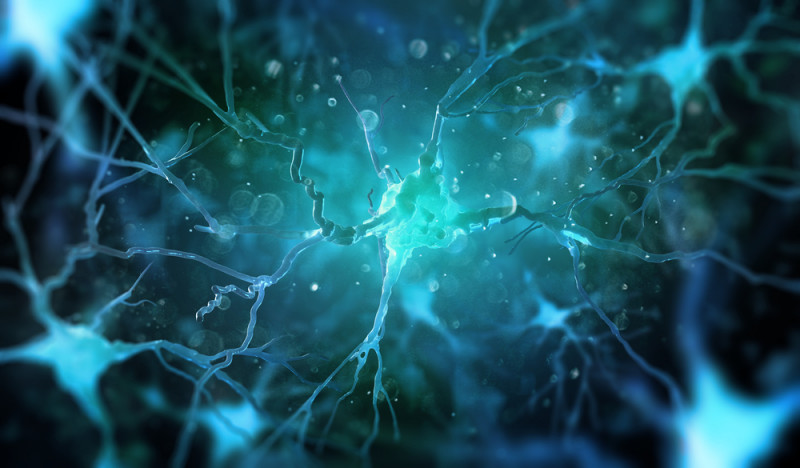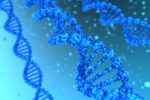Clearing of Stress Granules, Linked to Cell Damage in ALS, Detailed

Andrii Vodolazhskyi/Shutterstock
Ubiquitination — the cell’s process of tagging proteins, often to degrade unwanted ones — is essential for the disassembly of stress granules that, by not being cleared, damage cells in amyotrophic lateral sclerosis (ALS) and other neurodegenerative diseases, a study showed.
The study, “Ubiquitination is essential for recovery of cellular activities after heat shock,” was published in the journal Science and conducted by scientists at St. Jude Children’s Research Hospital.
A complementary study by this same research team also identified the central stress granule protein G3BP1 as a key player in this disassembly process, with its ubiquitination and subsequent removal from stress granules critical for their disassembly.
This second study, “Ubiquitination of G3BP1 mediates stress granule disassembly in a context-specific manner,” was published in the same journal.
“Our work has provided needed clarity on how ubiquitination actually plays an expanded role in stress response,” J. Paul Taylor, MD, PhD, the studies’ senior author and chair of St. Jude’s cell and molecular biology department, said in a press release.
In response to stresses such as heat, toxins, and UV light, cells shut down key cellular activities and form stress granules — small clumps of proteins and messenger RNA (mRNA) molecules. mRNA is the intermediate molecule derived from DNA that guides protein production.
Stress granules are typically disassembled once the initiating stress is relieved. But in neurodegenerative diseases like ALS and frontotemporal dementia, stress granules are abnormally sustained, and associated with the toxic buildup of other proteins.
“We want to understand cell stress responses from a basic cell biology perspective but also because the processes involved in how cells react to stress are relevant to the biology of neurodegenerative diseases,” said Taylor, also an investigator at the Howard Hughes Medical Institute.
Using lab-grown cells, including neurons from mice and people, the researchers found that ubiquitination is key for stress granule disassembly.
Ubiquitination is the natural process of adding a small protein, called ubiquitin, to other proteins to tag them for various processes, but mainly for protein degradation. This degradation is essential for ensuring that unwanted proteins are broken down in cells, allowing nerve and other cells to continue functioning as intended.
Stress responses are associated with an increase in ubiquitination, which has been “conventionally ascribed to the need for degradation of misfolded or damaged proteins,” the researchers wrote.
When looking for potential differences in ubiquitination in responses to different types of stress, however, the researchers found ubiquitination was not essential for the formation of stress granules and the shutting down of cellular events.
But it was critical for the clearance of stress granules induced by heat stress.
Particularly, blocking ubiquitination in lab-grown cells exposed to heat stress prevented a return to cell processes and stress granule disassembly after that stress ends.
“Rather than reflecting the degradation of stress-damaged proteins, this ubiquitination primes cells to dismantle stress granules and reinitiate normal cellular activities once the [heat] stress is removed,” the researchers wrote.
Researchers also identified specific patterns of ubiquitination in response to different types of stress, including more than 10,000 ubiquitination sites on multiple proteins.
“We’ve created a vast dataset that can be mined for information about how specific proteins are involved in this stress response machinery,” Taylor said, adding that this can be “a useful resource for future research, and indeed has already benefited our own work.”
They used this dataset to focus on the G3BP1 protein, a critical component of stress granules that was found to be ubiquitinated during heat stress, but not when cells were exposed to other types of stress.
By blocking G3BP1 ubiquitination in cells exposed to heat stress, they found stress granules were able to form as usual — but were not cleared once the stress stopped.
In addition, G3BP1 ubiquitination was found to be essential for interaction with the endoplasmic reticulum (ER)-associated protein FAF2, which prompted the extraction of G3BP1 from stress granules by the valosin-containing protein (VCP). The ER is a cellular organelle involved in protein production, modification, and transport.
Ubiquitination and subsequent VCP-dependent removal of G3BP1 allowed for stress granule disassembly.
Given that mutations in the VCP gene have been associated with ALS and other neurodegenerative diseases, these findings can help in understanding the impaired stress granule clearance that is seen in patients.
Data also highlighted that “stress granules that arise in response to heat stress are disassembled at the ER, consistent with other heat shock-dependent stress responses,” the team wrote.
“In addition to revealing the crucial role that the G3BP1 protein plays in stress granule disassembly, our work also shows that different forms of stress that have similar effects on cells actually have distinct mechanisms for reversing the stress response,” said Youngdae Gwon, PhD, the first author of the second study.







